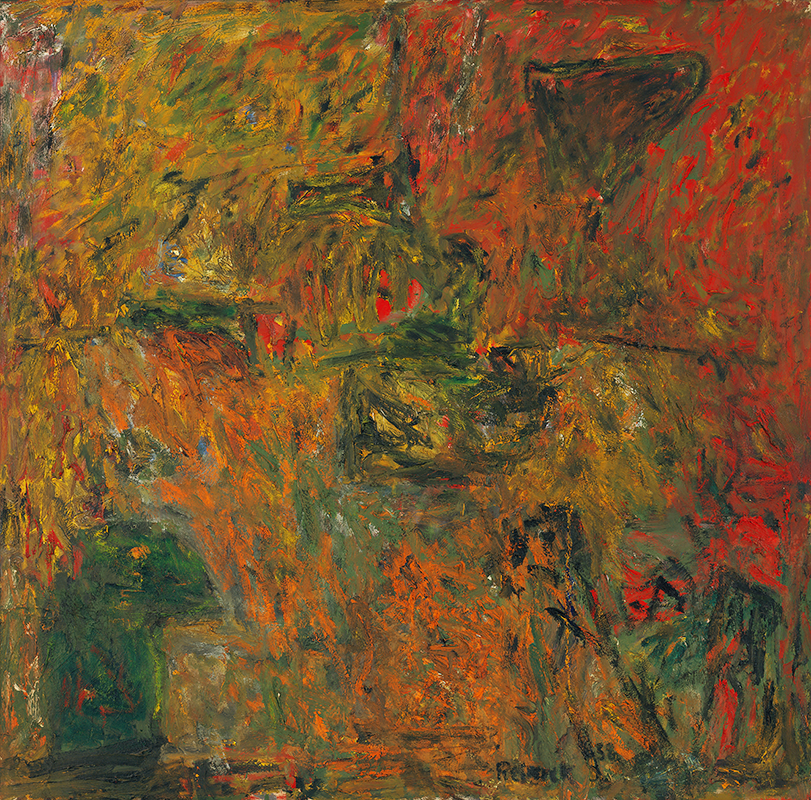Milton Resnick: Paintings 1937-1987
July 17 - December 21, 2018
The opening exhibition of The Milton Resnick and Pat Passlof Foundation will be a fifty-year retrospective survey, Milton Resnick: Paintings 1937-1987. The exhibition, curated by Geoffrey Dorfman, traces the artist’s transition from his early, inventive Abstract Expressionist works, to the dense allover canvases of his maturity for which he is best known. Resnick’s thickly impastoed works, sometimes of immense proportions, reflect a faith in the evocative powers of paint itself.
Drawn largely from the Foundation’s collection, the exhibition will also include loans from private and museum collections, including rarely-seen works from the 1940s and 50s. Additional works, such as the monumental and seminal New Bride (1963) from the Smithsonian American Art Museum, will be added to exhibition in fall 2018, and remain at the Foundation on extended loan.
The exhibition will be presented on three floors of the converted synagogue, on the lower east side of New York, that served as Resnick’s studio from 1976 until his death in 2004. The artist’s final studio, a closet-size room where he painted exclusively on paper in the last years of his life, is meticulously preserved and on view on the third floor.
The exhibition catalogue, Milton Resnick Paintings 1937-1987, now available, reproduces more than forty of Resnick’s paintings and will effectively be the only monograph on the artist currently in print. The exhibition is dedicated to the memory of Pat Passlof.
Milton Resnick (1917-2004) was born in the Ukraine and immigrated to New York City with his family in 1923. He grew up in Brooklyn, and entered the American Artists School in 1933. In the 1930s he was on the WPA artist project, and met Willem de Kooning, Arshile Gorky, John Graham, and other downtown artists. In 1940, Resnick was drafted and served in the U.S. Army through all of World War II. After returning to New York in September 1945, Resnick immediately began painting abstractions, thereby cementing his historical position as a member of the first generation of American Abstract Expressionists. He was a founding member of the Artists’ Club of the 1950s.
Over his long career, Resnick painted “through” classic Abstract Expressionist action painting, to arrive at works that gave the impression of allover monochromatic fields, although in fact comprised of myriad hues. Through the 1970s and 1980s his paint application became increasingly dense and his palette generally darkened, resulting in canvases of subtle, almost topographical presence. In the last years of his life, Resnick turned his painterly touch to visionary figure paintings, alternating darkness with humor. He died in 2004.

















